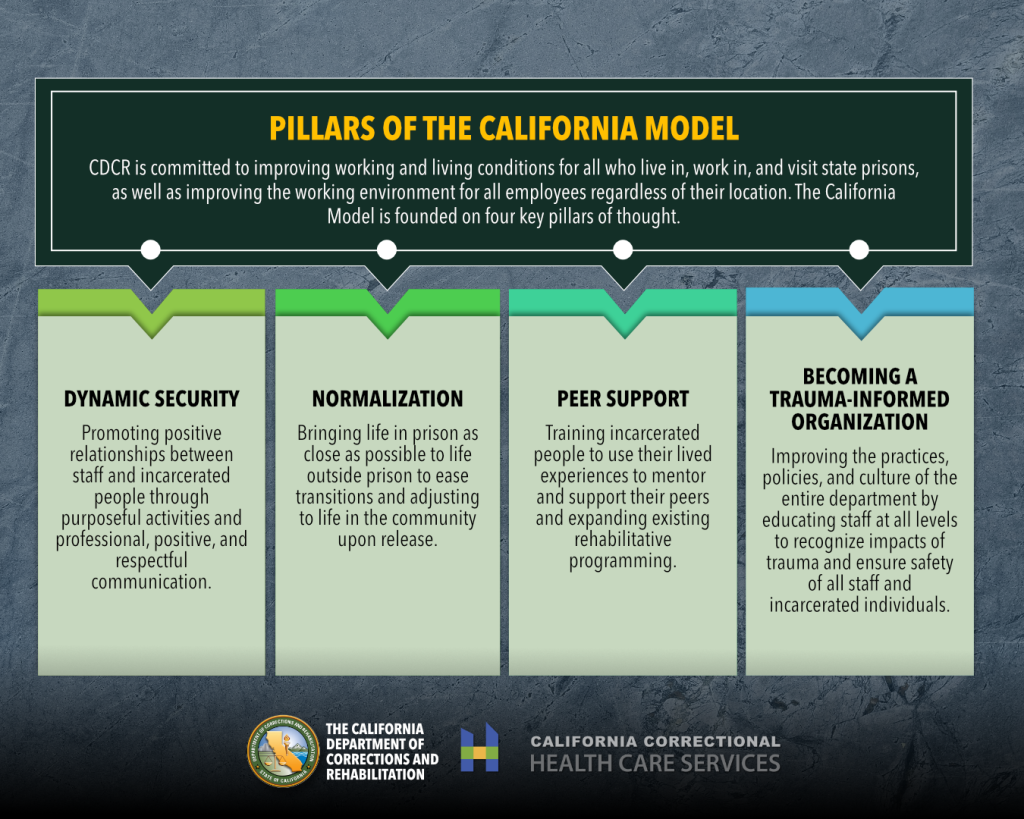Initiative to improve correctional landscape, working environment
CDCR Secretary Jeff Macomber shared insights and his vision for the California Model at a recent training at the Richard A. McGee Correctional Training Center in Galt.
Amend, a consultant to CDCR and CCHCS, and Norwegian corrections partners provided a joint training to staff who will be implementing new programs in their facilities.
(Learn more about Amend on their website.)
No matter their classification, institution staff have the potential to positively impact lives. By fostering environments conducive to communication, rehabilitation and reentry, the California Model aims to reduce incidents of violence and increase the wellness of all CDCR and CCHCS employees.
Secretary spoke with various missions at California Model training
The multiple-day trainings included staff from:
- High Security
- General Population Males
- Female Offender Programs and Services
- and Reception Center missions.
Representatives from custody and health care also attended the trainings.
Participating in the training were:
- California State Prison-Corcoran (COR)
- California State Prison-Sacramento (SAC)
- Richard J. Donovan Correctional Facility (RJD)
- Central California Women’s Facility (CCWF)
- Substance Abuse Treatment Facility (SATF)
- San Quentin Rehabilitation Center (SQRC)
- Valley State Prison (VSP)
- Salinas Valley State Prison (SVSP).
“You’re our eight trial sites and you’re going to find stuff that works and doesn’t work,” said Secretary Macomber. “We want to take the best practices from each of your institutions and expand this to other locations. It will become part of the norm.”
Trained staff will be peer mentors
The training was formed to establish momentum and creates a community of peer mentors among staff from the eight institutions. They will play a key role in implementing the California Model programs at their institutions.
“Amend is part of the medical school at the University of California San Francisco. Our goal is to support prison staff and correctional leaders to make changes in prisons that reduce the harm the facilities have on the people who work or live in them,” said Dr. Brie Williams, Founder and Director of Amend. “We are very proud of the work your CDCR and CCHCS colleagues have done. We are looking forward to learning about experiences and ideas, bringing you some new tools, and supporting you to create a better working environment and a more meaningful profession.”
The training provided an overview of the CDCR/CCHCS culture change initiative that focuses on several core principles:
- Dynamic Security: Building professional relationships between staff and incarcerated people to create healthier people and safer institutions;
- Normalization: Prison should resemble life outside as much as possible, easing community return and minimizing institutionalization;
- Progression: People can work toward additional privileges and successful reentry incrementally through hard work, healthy living, and motivation – with each step comes more responsibility.
“The training went really well,” reports CCWF Lt. Monique Williams. “It was so needed and painted a greater picture for the future of the California Model in CDCR at our institutions.”
By Todd Javernick, Information Officer
Office of Public and Employee Communications
Learn more about the California Model on the CDCR website.


Read more rehabilitation stories.
Follow CDCR on YouTube, Facebook, X (formerly Twitter). Listen to the CDCR Unlocked podcast.
